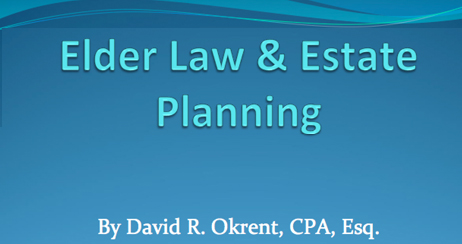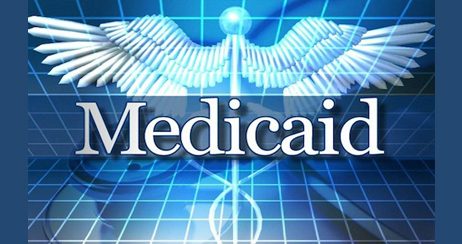The NY Governor’s 2024-2025 budget contained a new section of the Real Property Law in New York, Section 424 authorizing Transfer-On-Death Deed(s) for New York real property (See Governor’s budget, Art. VII, Part O, sec. 12).
This new section creates an option for an owner of a piece of New York real property to name a beneficiary who will inherit it on the death of the owner in a “Transfer-On-Death Deed” (hereafter referred to as “TODD”) or by an “instrument,” also described by the new law. This new law is intended, at the owners death, to reduce the need for a Surrogates Court proceeding, simplify the processes and potentially reduce costs of transferring a piece of New York real property. However, using it may actually cause many other problems, outweighing this benefit. It has been suggested that it is especially helpful to low-income families who have limited resources and may wish to maintain clear title to the family homestead at the death of the owner(s). It is to be noted that this new law does not affect other deed options or uses.
While at first impression this appears to be an improvement, there are technical requirements, potential conflicts with other laws, lack of clarity within it, and practical aspects of its implementation that may far outweigh its benefits and should only be used after very careful analysis. Below are some comments on the provisions of the new statue.
First, the TODD or instrument, like all other deeds, must be signed in the presence of a notary, however, this new law also requires the owner “sign in the presence of two (2) witnesses” (statue does not talk about if they can be related or not to the owner or a beneficiary) and that it must be “recorded” by the Clerk of the County where the property is located “during the life of the owner.” These extra requirements of witnessing and recording during life of the owner may make this expensive and complex, maybe more then perhaps simply probating a Will after the death of the owner in Surrogates Court. Further, in the event the owner desires to change the beneficiary named in a recorded TODD or instrument, another new TODD or instrument needs to be executed, again in front of a notary, and two (2) witnesses and “recorded” by the Clerk of the County where the property is located “during the life of the owner.” If the owner had never designated a beneficiary in a TODD or instrument, they would simply change their Will. Further, if they want to avoid probate and a trust could have been used and amend as needed (assuming power in trust existed). Both the Will and Trust are immediately effective upon signing, and not upon the “recording” of the TODD or instrument by the Clerk of the County where the property is located “during the life of the owner.”
Why is the requirement of “recording” of the TODD or instrument by the Clerk of the County where the property is located “during the life of the owner” so troublesome? Each Clerk of each County has its own filing requirements which are complex, costly and, once the documents are filed and can take the Clerk’s office months to actually record. Imagine a person in poor health want to use this too add beneficiaries onto their deed or remove a beneficiary maybe because of a falling out they had with the beneficiary, or maybe the beneficiary became disabled, or is in the throws of a divorce, law suit, bankruptcy or the owner decides there is a better Tax plan, Medicaid plan, or simply wants to leave the real property in a trust for the beneficiary. They will still need to update their Will and/or Trust, to conform and unify the estate plan to there wish. If a newly executed TODD or instrument is delayed in being recorded and doesn’t get recorded prior to the owners death it is completely ineffective and the change desired will not go into affect. For most people, it would seem, the ability to be able to timely and relatively quickly change beneficiaries would appear to be more important. Imagine, with a TODD or instrument, having to record a new deed every time the owner decides to make a change. We see clients all the time that update and change beneficiaries as lives move forward and the world changes. These changes can occur for example around happy times, such as, marriage and addition of a new family member, as well as hard times, such as the loss of a family member, disability, divorce, law suit or bankruptcy of a family member, or simply the need to balance out an estate plan based on gifts to particular family members.
Second, if the property is jointly owned with rights of survivorship, both owners, or the living owner, must sign the TODD or instrument in the presence of two (2) witnesses, assumably at the same time as well as to revoke or amend it! More complication, and only the beneficiaries on the second death will inherit. This means after the death of the first owner the survivor can change the beneficiaries anyway they want.
Third, the new law states that if you name more then one beneficiary and one of the beneficiaries dies prior to the death of the owner, the remaining named beneficiaries inherit the property, not the children or issue of the deceased beneficiary. This eliminates the ability to leave the share of property that the beneficiary would have received to their issue without having to again execute and record another TODD or instrument before they die! Also, you cannot provided properly for minors provisions, special needs trust provisions, asset protections provisions that can be put in a Will or trust
Fourth, it is notable that the new law states the transfer is revocable and vest no rights in the beneficiaries, their creditors, until the death of the owner. To further support this the statue states that “it is revocable even if you try to make it irrevocable” by stating such in the TODD or instrument. This means it is not a good planning tool when planning for Long Term Care, i.e. Medicaid. Additionally, that statue clearly states the use of a TODD or instrument is not a transfer for Medicaid Eligibility purposes.
Fifth, the language of the statue appears to give creditors more rights against this property then they would have if it a trust was used. Typically, property passing outside of a Surrogates Court proceeding is not readily available to pay claims of creditors. However, the new law states “to the extent the transferor’s probate estate is insufficient to satisfy an allowed claim against the estate or a statutory allowance to surviving spouse or child, the estate may enforce liability against property transferred at the transferor’s death by a transfer on death deed.” This statue says if the estate is insufficient a creditor may proceed against this property within 18 months of the owners death. All this language lacks clarity regarding claims that have been specifically exempt from estate recovery as non-estate assets by other laws and regulations, such as Medicaid claims which are limited to the probate estate, and may conflict with the law governing spousal rights.
Sixth, although the provisions includes a statutory form that could be used to accomplish a TODD or instrument, due to the complexities in preparing, executing and recording a deed no one should consider this a “DIY” project, even though the statute implies it can be. The cautionary language included in the sample is “You may want to consult a lawyer before using this form.” However, concern is high that this language is not serious enough. The complexities and damage that could be done may leave the property untransferable, ownership confusion only resolvable through a complicated court proceeding, and the overriding purpose to help families will be lost in the practicalities.
Conclusion, although the motive and purpose of this new law is commendable, due to all the potential practical complications and pitfalls only some of which are state above, TODD deeds and/or instruments should not be used without very careful considerations. Wills and Trusts still remain better tools for most people!
Click here for NYS DOB FY 2025.









